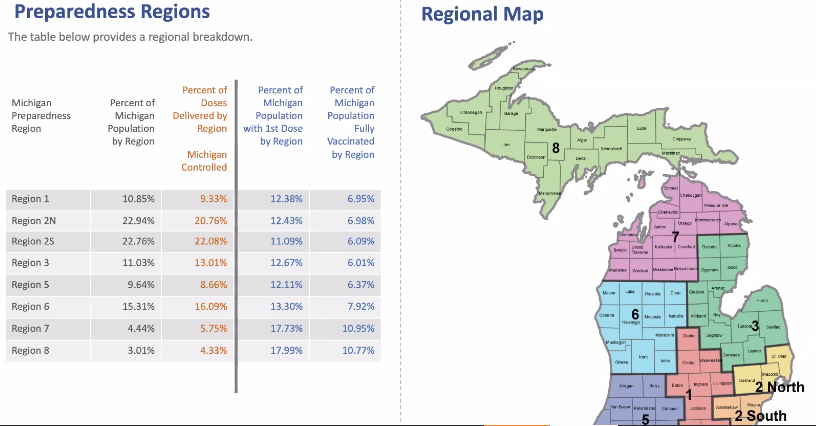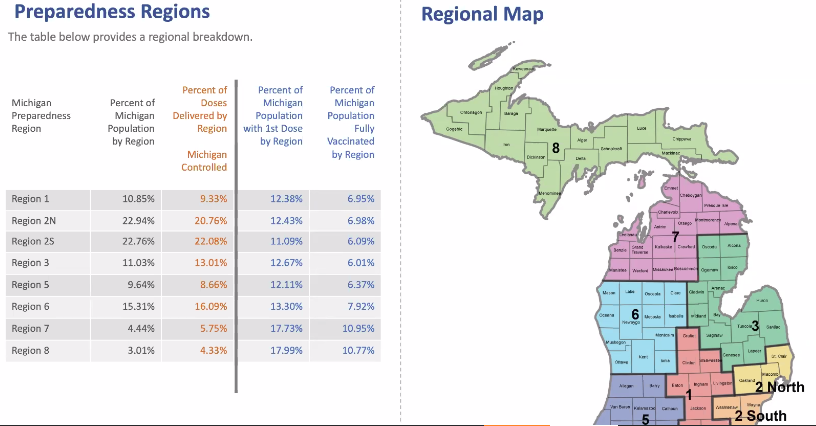
Today I attended the second meeting of the Protect Michigan Commission (PMC). The PMC is a statewide advisory board which provides input on Michigan’s COVID-19 vaccination efforts – I was one of 3 Yoopers appointed to the PMC by Gov. Whitmer last month. I have also been participating in meetings of the PMC Rural Workgroup and Youth (Ages 16-30) Workgroup, which are focused on vaccination access and communications for rural Michiganders and young folks in our state. As you can see from the image above, the U.P. is actually well ahead of the rest of the state when it comes to vaccination, with 18% of Yoopers having received at least the first dose of the Pfizer or Moderna vaccines (vs. 16% of all Michiganders) and 11% having received both doses (vs. 9% of all Michiganders). The U.P. (Region 8) is ahead of all other regions in the state in terms of vaccination rates.
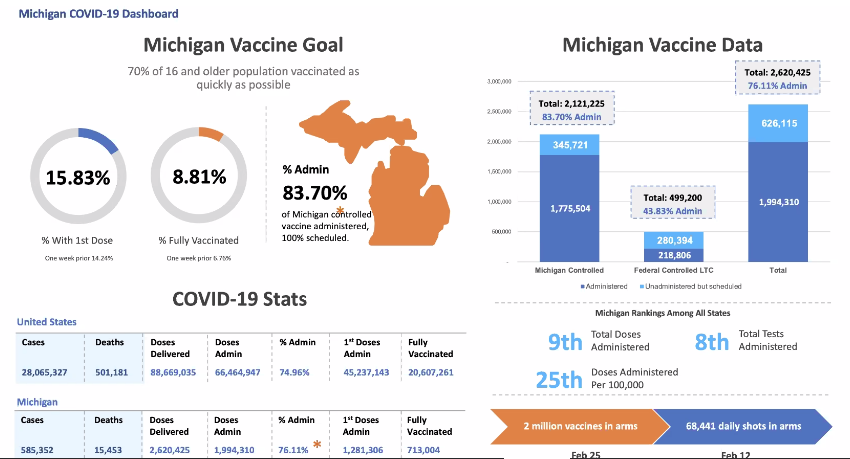
Contrary to some initial concerns that I had heard, the U.P. is not being disadvantaged by the state’s focus on equity or the use of the CDC Social Vulnerability Index (SVI) to help determine vaccine distribution. This makes sense, because the SVI not only measures race and ethnicity, but also poverty, age, the prevalence of certain health conditions, disability rates, high school dropout rates, lack of transportation, and other local data. High SVI ratings also correspond very strongly with areas which saw high COVID-19 infection and mortality rates in 2020, including many parts of the U.P. In fact, the U.P. and Northern Lower Peninsula score at least as high on the SVI as any other part of the state.
Sadly, some state legislators in Lansing (led by State Sen. Tom Barrett, R-Potterville) are currently trying to prevent the state from using equity-based metrics like the SVI to determine vaccine distribution – they want to prohibit the consideration of race, ethnicity, or socioeconomic status to help determine how to allocate COVID-19 vaccine doses. This would almost certainly hurt the U.P., and would lead to much less equitable vaccination outcomes on a statewide level. Please consider contacting State Rep. Sara Cambensy and State Sen. Ed McBroom to urge them to oppose Sen. Barrett’s amendment – in my view, it is clearly bad for the U.P. and will hurt millions of Michiganders in both rural and urban communities and will mostly benefit relatively well-off folks living in downstate suburbs.
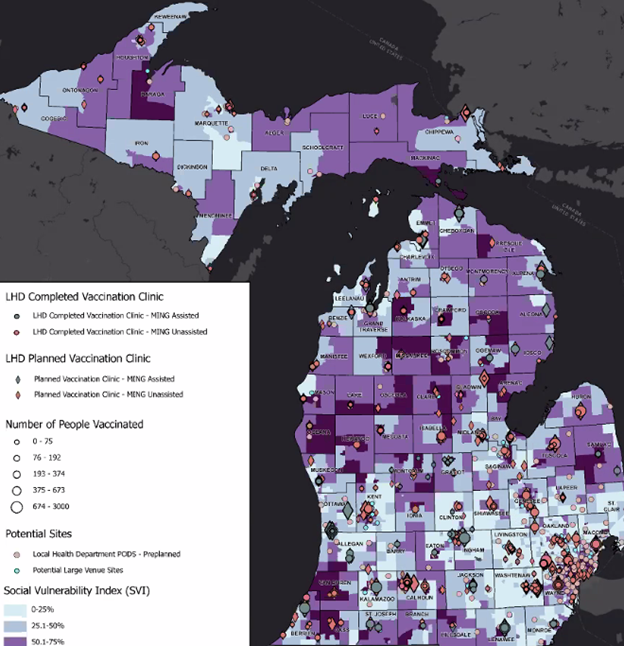
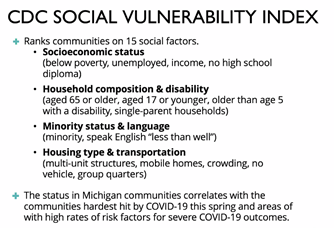
The state’s goals for vaccine distribution are as follows:
- Get 70% of Michiganders age 16+ vaccinated ASAP.
- Ensure that vaccine distribution is at least 90-95% efficient.
- Have zero disparity in vaccination rates re: race, ethnicity, or Social Vulnerability Index (SVI).
- Make sure that no Michigander is more than 20 minutes away from a vaccination site.
To achieve those goals, MDHHS has devised 5 strategies which will help us get as many Michiganders vaccinated as quickly as possible:
- Get more people vaccinated.
- Build a robust network of vaccination sites.
- Promote efficiency in vaccine delivery and administration.
- Mobilize personnel to maximize vaccination efforts.
- Empower people with information to gain the confidence to get vaccinated (this is really where the Protect Michigan Commission comes in, although we also provide input and feedback that can strengthen the other 4 strategies as well).
Here are some other highlights from the first two Protect Michigan Commission meetings:
– We have now delivered more than 2 million doses of COVID-19 vaccine, nearly 1 in 10 Michiganders are fully vaccinated, and we may be able to expect double the current supply of vaccine by May.
– The State is not “hoarding” any vaccine – 100% of the vaccine doses controlled by the State of Michigan has been scheduled, and 84% have been administered already.
– In the graphic below you can see that the initial MDHHS vaccination plan had projected that the general population age 16+ would be able to start receiving the vaccine this fall. However, MDHHS now seems to be more optimistic about vaccine supply and distribution capacity, and it was stated at our Jan. 29 meeting that the general population will hopefully be able to start receiving the vaccine by this summer.
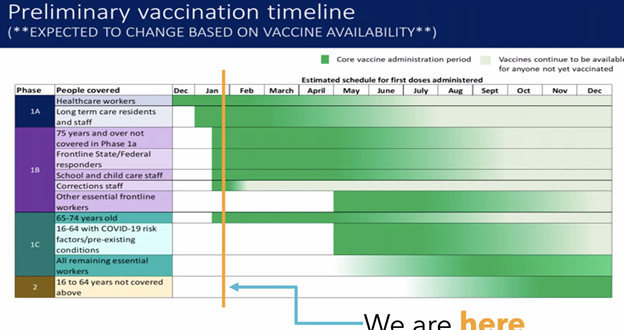
– The State of Michigan is also launching a targeted public information campaign to encourage people to get vaccinated through paid media advertising, and will be devoting at least $30 million to this effort.
– The new Johnson & Johnson single-dose vaccine is 100% effective at preventing severe illness and death from COVID-19, and 60-70% effective at preventing infection. This vaccine will be available as soon as next week, and will allow us to vaccinate Michiganders much more quickly.

